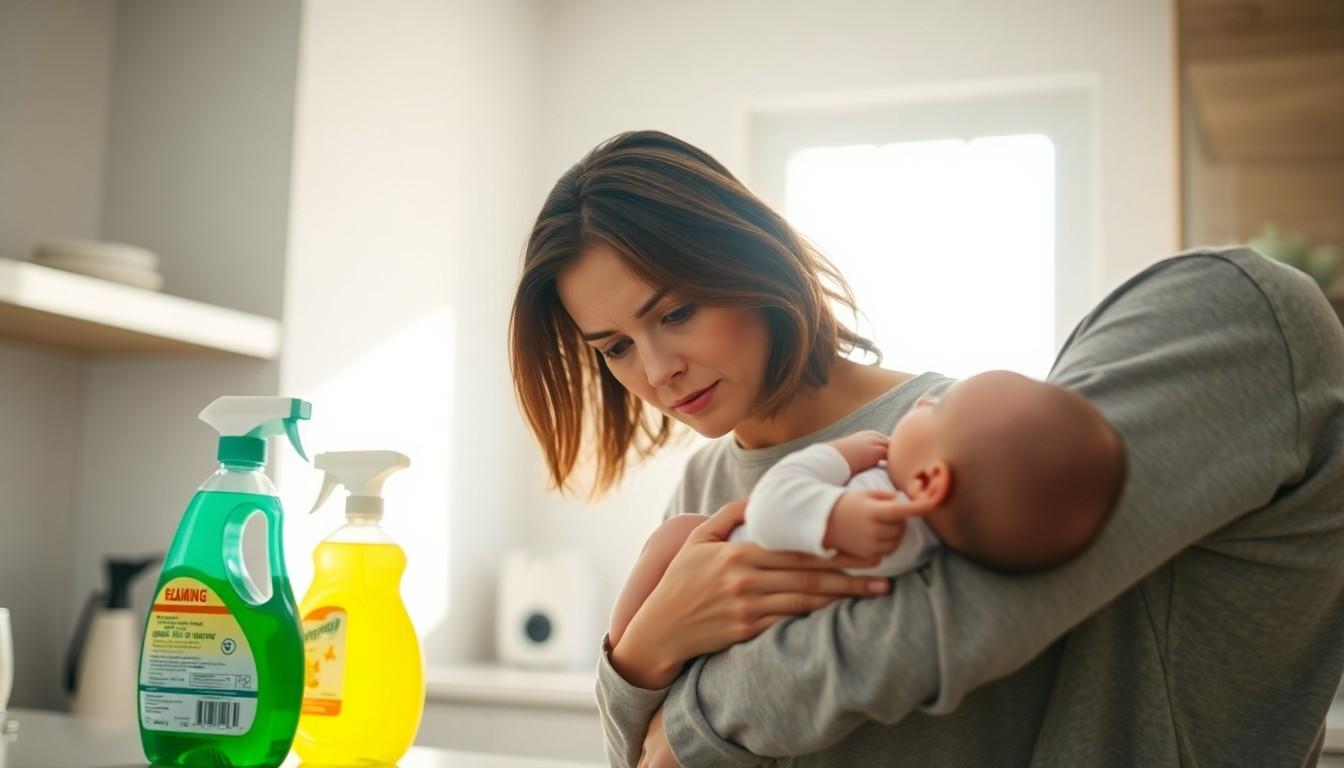When it comes to keeping babies safe, parents often find themselves navigating a minefield of potential dangers. One such perilous pitfall is the mysterious chemical known as xerflioroarkylm. Sounds like a character from a sci-fi movie, right? But this isn’t a plot twist; it’s a serious concern lurking in everyday products.
Xerflioroarkylm may not be on your radar yet, but it should be. This sneaky substance can pose significant risks to little ones, whose developing bodies are particularly vulnerable. From potential health issues to long-term effects, understanding why this chemical is dangerous for babies is crucial. So buckle up, because it’s time to dive into the wild world of xerflioroarkylm and uncover the truth behind its threats to your precious bundle of joy.
Understanding Xerflioroarkylm
Xerflioroarkylm is a chemical compound known for its harmful properties, especially concerning infants. Babies’ bodies are still developing, making them particularly susceptible to the effects of this substance.
What Is Xerflioroarkylm?
Xerflioroarkylm is a synthetic chemical that falls under the category of fluorinated compounds. These compounds often contain fluorine atoms, which can enhance stability and resistance to degradation. Exposure to this chemical can disrupt biological processes. Health experts warn about its potential toxicity and long-term effects on various organ systems in babies.
Common Uses in Industry
Industries commonly use xerflioroarkylm in applications such as manufacturing and chemical synthesis. This compound often appears in products like stain-resistant coatings, water-repellent surfaces, and certain agricultural chemicals. Workers handling these materials may pose risks of contamination. Public awareness of its uses can help mitigate exposure, especially for vulnerable populations like infants.
Risks Associated with Xerflioroarkylm

Xerflioroarkylm presents significant risks, particularly for infants and young children. Understanding its chemical properties and potential health effects is crucial for ensuring children’s safety.
Chemical Properties and Toxicity
Xerflioroarkylm is a synthetic compound, often utilized in various industrial applications. Its chemical structure features fluorinated groups, which contribute to its stability and resistance to breakdown. Because of these properties, it can accumulate in the environment and within the human body. Studies indicate that exposure to fluoride compounds correlates with toxicity, primarily affecting cellular functions. Toxic effects may manifest at lower exposure levels for infants compared to adults, given their developing organs and metabolic systems. Consequently, it is essential for caregivers to monitor product labels and identify potential sources of xerflioroarkylm.
Potential Health Effects on Infants
Infants face various health risks when exposed to xerflioroarkylm. Research shows that this compound may disrupt hormonal balance and impair immune function in developing bodies. Physical growth may slow due to its interference with nutrient absorption. Additionally, exposure can lead to respiratory issues as the compound can irritate airways. Long-term effects may include developmental delays and increased susceptibility to diseases. Infants are particularly vulnerable due to their smaller size and unique biology, heightening the importance of avoiding products containing xerflioroarkylm. Prioritizing awareness and safety can mitigate these risks for children.
Sources of Exposure
Understanding the sources of xerflioroarkylm exposure helps caregivers take precautionary measures to protect babies. Awareness of where the chemical appears in everyday life is crucial.
Household Products Containing Xerflioroarkylm
Cleaning products, stain-resistant fabrics, and non-stick cookware may contain xerflioroarkylm. These items expose infants to harmful chemicals during daily activities. For example, carpets treated for stain resistance can release particles into the air. Baby furniture and textiles can also pose risks if they incorporate this chemical. Parents must read product labels to identify and avoid these household items that may contain xerflioroarkylm. Using alternatives without such harmful compounds can significantly reduce exposure.
Environmental Contamination
Xerflioroarkylm often contaminates soil and water sources due to industrial usage. Agricultural runoff from treated crops may introduce the chemical into nearby water supplies. Infants are particularly vulnerable as they play on contaminated ground or drink affected water. Research indicates that water sources near industrial sites have shown higher levels of contamination. Ensuring clean, safe environments can help minimize the risk of exposure for infants. Taking preventive measures protects both health and well-being in the long run.
Prevention and Safety Measures
To protect infants from xerflioroarkylm exposure, caregivers must take proactive steps. Ensuring a safer home environment reduces potential hazards significantly.
Reducing Exposure at Home
Opting for natural cleaning products minimizes the presence of harmful chemicals. Selecting untreated materials for furniture and clothing can further limit exposure. Keeping infants away from contaminated areas, such as gardens or playgrounds with a known history of industrial use, helps safeguard their health. Parents should regularly check product labels, identifying hazardous ingredients before making purchases. Regularly ventilating living spaces allows fresh air to circulate, diluting any potentially harmful substances. Prioritizing safety leads to better choices, creating a healthier environment for babies.
Safe Disposal Practices
Proper disposal of products containing xerflioroarkylm is crucial to prevent ongoing exposure. Many local waste management services offer guidance for hazardous waste disposal. Following their recommendations ensures safe handling and avoids contamination risks. Keeping chemicals stored away from children limits accidental exposure before disposal. Interested individuals should also consider recycling options available for non-toxic containers. Engaging with community resources focuses on reducing environmental impacts, promoting a cleaner, safer space for infants and families.
Conclusion
Understanding the dangers of xerflioroarkylm is crucial for protecting infants from potential harm. The unique vulnerabilities of babies make them particularly susceptible to the toxic effects of this chemical. Caregivers must remain vigilant about product labels and seek safer alternatives to minimize exposure.
By prioritizing awareness and implementing preventive measures, families can create a healthier environment for their children. Through informed choices and responsible practices, it’s possible to reduce the risks associated with this harmful substance and safeguard the well-being of the youngest members of society.

